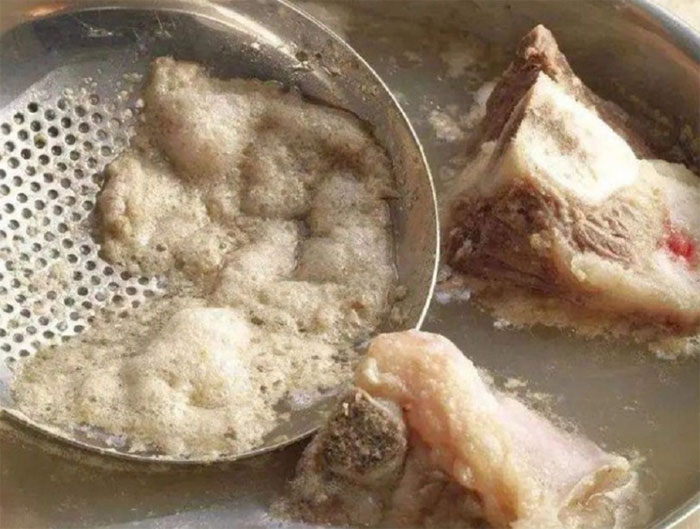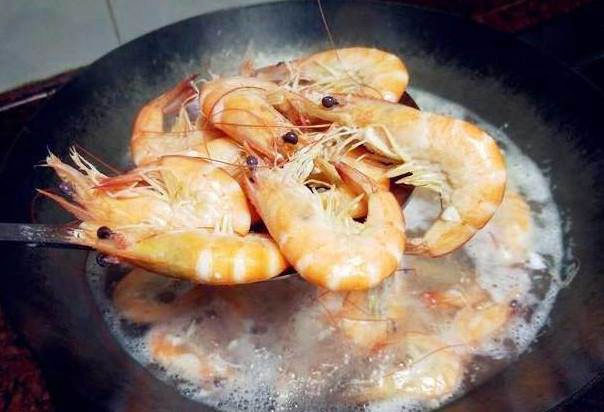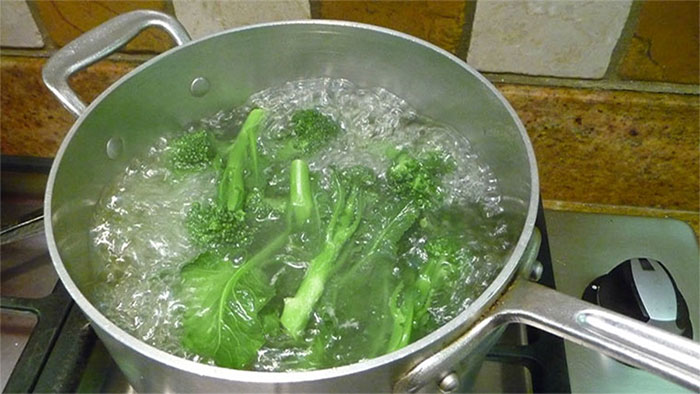Many people often feel confused when cooking about how to handle the foam that rises: they are afraid to skim it off, fearing waste, but leaving it there raises concerns about toxicity. This article will explain the truth about this foam and guide you on when to skim it off and when to leave it in.
When we cook soup or heat food, occasionally a layer of foam will appear. Many believe this is impurities or dirt from the food, so they use spoons to skim it off. However, some argue that this foam contains some of the most valuable nutrients in the dish and should not be wasted. So, what is the truth?
To answer this question, Life Times conducted an interview with Associate Professor He Jiguo (School of Food Science and Nutritional Engineering, China Agricultural University) and Mr. Wang Guoyi (Deputy Director of the Food and Health Committee of the Beijing Food Association).

The foam that rises when cooking is a phenomenon caused by surfactants in water.
Why Does Foam Appear in Cooking?
According to the two experts, the appearance of foam during cooking is a phenomenon caused by surfactants in water being agitated.
Surfactants are compounds that reduce the surface tension of liquids. When the liquid is disturbed, air can enter, leading to foam formation. When cooking food, organic substances such as proteins and carbohydrates dissolve or disperse in water, creating a dense layer of foam when boiled continuously.

Some types of foam should be skimmed off, while others should be consumed.
This layer of foam often contains many nutrients and beneficial organic compounds. However, it is not entirely good, as antibiotics and pesticides present in the food can also infiltrate the foam. Therefore, some types of foam should be skimmed off, while others should be actively consumed.
3 Types of Foam to Skim Off
1. Bone Broth Foam
The foam created when simmering meat or bones mainly consists of excess blood, residue, and proteins that have denatured at high temperatures. This foam has a fishy smell, and if not skimmed off, it can affect both the appearance and flavor of the dish.
So, it is advisable to use a spoon to skim off the initial layer of foam, while subsequent layers can be left in.
2. Foam When Boiling Shrimp

The foam dissolving in water mainly consists of internal blood and some impurities, so it should be discarded.
Astaxanthin in shrimp is highly stable and will separate from proteins when exposed to high temperatures, turning red; thus, shrimp will change color when boiled at high heat.
The foam dissolving in water mainly consists of internal blood and some impurities from the shrimp’s shell and head, so it should be skimmed off.
3. Foam in Carbonated Drinks
The foam that appears when you open a carbonated drink is carbon dioxide. Excess carbon dioxide stimulates the stomach lining, which reduces gastric acid secretion and affects digestive function; it is best not to consume this type of foam but to let it dissipate or skim it off before drinking.
3 Types of Foam to Use
1. Soy Milk Foam
When processing soy milk, this layer of foam is created due to the high saponin content in soybeans.
Saponins have biological functions such as regulating lipid metabolism, lowering cholesterol, antimicrobial properties, tumor inhibition, anti-thrombotic effects, immune regulation, and antioxidant properties. Therefore, you should not skim it off as this foam is very beneficial to health.
2. Foam When Cooking Fruits and Vegetables

The type of foam that appears when boiling vegetables is safe to consume.
Cooking certain fruits and vegetables can also produce similar bubbling foam, such as jujubes, which tend to foam during cooking due to their saponin content.
Additionally, boiling some vegetables may occasionally produce harmless foam that you can safely consume.
3. Foam When Brewing Tea
Tea also contains saponins, so it can also produce foam when brewed. According to scientific research, saponins in tea may have antibacterial properties and inhibit fat absorption, so there is no need to worry about the foam that forms when brewing tea.

















































